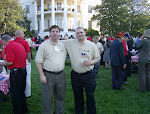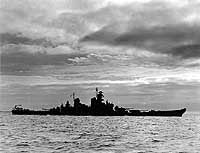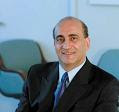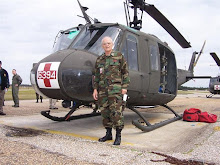John Brennan is Obama's Deputy Security Advisor. Have you listened to the man "spin" this week? He is dancing as fast as he can around terrorism, and apparently finding favor with President Obama because he is keeping his job. Here's is a story about Brennan and, and perhaps, the slain mother of three who was FOB Chapman CIA chief when she died at the hands the CIA double-agent bomber, as well as some background on the 9-11-01 attacks. It may all be one story, or it may be fragments. It is speculation, but the pieces seem to fit together. The anchor of this tale is a few sentences in a recent New York Times article. Let me know what you think.
The CIA Chief of Forward Operating Base Chapman in Afghanistan's Khost Province was a woman and mother of three. She had a long career in counterterrorism, and specifically in hunting Osama bin Laden. A former CIA agent, Michael Scheuer, interview with CNN's Gloria Borger last week and spoke of a CIA agent who "arranged an operation in 1998 that would have killed or captured Osama bin Laden. That agent may have been the assassinated FOB Chapman Chief. But the kicker is what Scheuer said about Obama's Deputy Security Adviser, John Brennan and how he may have been connected to the CIA Base Chapman Chief.
Osama bin Laden passport photo
The unnamed Chief Officer was a part of the famous, embattled and now disbanded CIA Alec Station, which in summer 2001 saw more than a few glimpses of the September 11th attacks of the same year. Michael Scheuer, the head of the CIA's bin Laden hunt group told Gloria Borger that one of their officers (unknown if that office if the Base Chapman Chief) arranged an operational hit on Osama bin Laden in 1998, but John Brennan stopped it. Speaking of the Christmas Day bombing, Scheuer said:
...it hurts morale even more because one of the officers who got killed had arranged an operation in 1998 that would have killed or captured Osama bin Laden. And Mr. Brennan was instrumental in preventing that operation from occurring. Instead he said the Americans should trust the Saudis to take care of bin Laden.
So it's a painful-- it's a painful death, but more importantly it's a death that didn't need to occur had Mr. Clinton -- Mr. Brennan, George Tenet, and Mr. Berger had the courage to try to defend Americans.The following details some of the hunt for bin Laden, which the CIA Base Chapman chief was apparently involved in with Alec Station - but in no way is a criticism of her, and I cannot identify her as the agent Scheuer was speaking about. Note that I only assume she was a member of Alec Station, as is reported by the New York Times. I do not know this with any certainty.
Here is a look into this officer's past, (if it is true that she was assigned to Alec Station) - the people she worked with and the intrigue the Alec Station was engaged in:
Working from a small office near C.I.A. headquarters, the group, known inside the agency as Alec Station, became increasingly alarmed in the summer of 2001 that a major strike was coming. One former officer recalls that the woman had a seemingly encyclopedic knowledge of Al Qaeda’s top leadership and was so familiar with the different permutations of the leaders’ names that she could take fragments of intelligence and build them into a mosaic of Al Qaeda’s operations
“She was one of the first people in the agency to tackle Al Qaeda in a serious way,” said the former officer, who, like some others interviewed for this article, spoke on the condition of anonymity because the victims’ identities remain classified.Source - History Commons: While we do not know when the Chief Officer joined Alec Station, the unit was tailing Osama bin Laden in Sudan by the end of 1991. Alec Station originated in 1995 or 1996. Members of the unit were reassigned within the CIA's Counterterrorist Center. Michael Scheurer, the first head of the unit said bin Laden had been confirmed as a serious threat as early as 1997. But in1996, Alex Station was complaining that the National Security Administration (NSA) gave them only summarized transcripts of intercepted calls between al-Qaeda members. Scheuer wanted verbatim transcripts.
Scheuer later said:
“Over time, if you read enough of these conversations, you first get clued in to the fact that maybe ‘bottle of milk’ doesn’t mean ‘bottle of milk.’ And if you follow it long enough, you develop a sense of what they’re really talking about. But it’s not possible to do unless you have the verbatim transcript.”He also charged that the summaries they received from NSA were not timely - "they came once a week or something lie that."
Alec Station’s desire for verbatim transcripts will intensify when it discovers the NSA is intercepting calls between bin Laden and his operations center in Yemen:In December 1996, the CIA learns from a CIA operative "detailed" to the NSA, that the NSA has discovered an al-Qaeda communications hub in Yemen. The CIA refuses to share and threatens punishment for the CIA officer who alerted Alec Station. The officer continued to funnel info to the team. Alec Station evenutally built its own "listening post."
However, the NSA constantly rejects its requests. Scheuer will later say: “We went to Fort Meade to ask then the NSA’s deputy director for operations [Barbara McNamara] for the transcripts, and she said, ‘We are not going to share that with you.’ And that was the end.” He will add that McNamara “said that the National Security Act of 1947 gave her agency control of ‘raw’ signals intelligence, and that she would not pass such material to CIA.”
Scheuer continues to complain, and is upset once more, and after asking for U.S. military special operations officers, he is refused. Late in 1996, Scheurer prepares a 50-paragraph report describing in detail how Osama bin Laden sought to obtain nuclear weapons. Some of the report was developed from info obtained fromal-Qaeda defector Jamal al-Fadl.
However, Scheuer’s superiors refuse to distribute the report, saying it is alarmist. Instead, only two of the paragraphs are circulated, buried in a larger memo.In 1997, Alec Station notifies CIA Director George Tenet that al-Qaeda intelligence from Saudi Arabia should be considered "hostile service." In the years to come, this claim is validated. When the Alec Station assessment of al-Qaeda as a serious threat was formally known, the assessment was not deemed credible by others in the the intelligence community. Michael Sheuer was said to have an "abrasive style:"
He and counterterrorism “tsar” Richard Clarke do not get along and do not work well together. Scheuer also does not get along with John O’Neill, the FBI’s most knowledgeable agent regarding bin Laden. The FBI and Alec Station rarely share information, and at one point an FBI agent is caught stuffing some of the unit’s files under his shirt to take back to O’Neill.The Alec Unit was almost disbanded in April and May 1998:
The CIA’s bin Laden unit, first created in early 1996...is ordered disbanded. It is unclear who gave the order. The unit appears to have been the most vocal section of the US government pushing for action against bin Laden.Later Scheuer says in a one-year period beginning May 1998, the CIA gave the U.S. "about ten chances to capture bin Laden or kill him...but the decision was made somewhere that "the intelligence was not good enough." Richard Clarke "strongly disagrees with Scheurers account of the events. Both Clarke and Scheuer agree that George Tenet was the only person to kill the attack operations - not the White House.
Apparently CIA Director George Tenet is unaware of the plans to disband the unit. He intervenes in mid-May and preserves the unit.
Michael Scheuer, the head of the unit, later will comment that by doing so, Tenet “dodged the bullet of having to explain to the American people why the [CIA] thought bin Laden was so little of a threat that it had destroyed the bin Laden unit weeks before two US embassies were demolished.” Scheuer also will comment, “the on-again, off-again signals about the unit’s future status made for confusion, distraction, and much job-hunting in the last few weeks” before the embassy attacks.
In late summer 1998, after the African embassy bombings, the CIA asks Alec Station what it needs to get bin Laden. Scheuer again asks for verbatim transcripts of intelligence interceptions, and in particular the intelligence between bin Laden, al-Qaeda, Yemen and Afghanistan, and says the code cannot be cracked without verbatim reports.
Higher officials order the NSA to comply, and they do, but only for less than 12 requests. Then the system returns to the way it was, with NSA only sharing summaries. The reason for the change back is unclear, although bin Laden stops using his satellite phone around this timeAnd here is a mammoth screw-up:
The CIA seems not to understand permission given by President Bill Clinton to assassinate Osama bin Laden. The instruction was contained in a memorandum of notification signed by Clinton authorizing the agency to use a group of tribal fighters to kill bin Laden. Previously, the tribal leaders had only been authorized to capture bin Laden, and this new memo marks an important shift in policy.Apparently, it is never even communicated to Michael Scheuer, head of Alec Station, the CIA’s bin Laden unit. Scheuer will later express his frustration at not being allowed to try to kill bin Laden, “We always talked about how much easier it would have been to kill him.”
According to author Philip Shenon, the memo is “written in stark language” and it makes it very clear “that the president was telling the tribal leaders they could kill bin Laden.”
However, the actual memo is closely held within the CIA, and the 9/11 Commission will comment, “This intent [to have bin Laden killed] was never well communicated or understood within the agency.”
In May 1999 George Tenet decides against striking on bin Laden's location three times.
Mike Scheuer, head of the CIA’s Bin Laden Unit, writes to a colleague in the field, “having a chance to get [bin Laden] three times in 36 hours and foregoing the chance each time has made me a bit angry…”
There is one more opportunity to strike bin Laden in July 1999, but after that there is apparently no intelligence good enough to justify considering a strike.In June 1999, Scheuer loses his job and is reassigned but remains inside the Alec Station:
Deputy Director of Operations Jack Downing tells Scheuer he is being fired...Downing says he will get a medal and a monetary award, but should tell his subordinates he has resigned. Scheuer refuses to lie to his officers, signs a memo saying he will not accept a monetary award, and tells Downing “where he should store the medal.”Richard Blee takes Scheuer's position at Alec Station. Scheuer stays with the Alec Station until 2004. Relations with John O'Neill at the FBI do not improve.
Six months later on December 29, 999, NSA notifies Alec Station that they have listened in on al-Qaeda phone calls which include contact with Khalid Almihdhar, Nawaf Alhazmi and Salem Alhazmi - all three hijackers on American Airlines Flight 77 on 0-11-01. By the time the three hijack the plane, Almihdhar and Alhazmi are on the FBI's terrorist-alert list. The FBI is also notified. The information overheard reveals that the three will attend a "summit in Malaysia in January 2000."
The CIA and other "friendly" foreign intelligence agencies track Almihdhar, hoping he will lead them to bigger fish. They learn his full name and the find that he has a "mulitple entry visa to the US valid through April 2000. BUT - they DO NOT place him on a terror watch list and they fail to tell the FBI about the visa.
Although Alec Station, the CIA’s bin Laden unit, is coordinating surveillance of al-Qaeda’s Malaysia summit, it fails to draft a full report on it to alert the rest of the intelligence community.
“Despite the importance of the operation, [Alec Station chief Richard Blee] had never bothered to write up and distribute an intelligence report on itHowever, Doug Miller an FBI agent assigned to Alec Station drafted is report for FBI superiors and the timing is important - between 9:30 a.m. and 4:00 p.m on January 5, 2000, the following happens (there is no, absolutely no, intimation here that "Michelle" is the Base Chapman Chief mentioned at the beginning of this article):
A CIA officer known as “Michelle” accesses Miller’s draft about an hour after he writes it. The cable is then blocked on the orders of the station’s deputy chief, Tom Wilshire, as a few hours after Miller drafts the cable Michelle attaches a message to it saying, “pls hold off on [cable] for now per [Tom Wilshire].” Miller is also told, “This is not a matter for the FBI.”Author James Bamford will later comment: “A potential terrorist and member of al-Qaeda was heading for the US, the FBI’s jurisdiction—its turf—and he [Miller] was putting the FBI on notice so it could take action. There was no reason to kill the message.”
'Michelle" drafts a cable falsely saying that the information about Almihdhar’s visa has been shared with the FBI and there will be a discussion the next day about whether the cable should be sent.
The Justice Department’s Office of Inspector General will later call the failure to pass the information to the FBI a “significant failure”...Around 7p.m. on January 5, 2000:
The 9/11 Commission will know of the incident, but will relegate it to an endnote in its final report, omitting Wilshire’s role entirely.
A CIA officer known only as “Michelle” sends out a cable saying the information that 9/11 hijacker Khalid Almihdhar has a US visa has been sent to the FBI “for further investigation.”The three hijackers disappear...the story goes on an on and Alec Station is placed with the CIA's Counterterrorist Center between January and July 2000 - which is characterized as "a larger group within the CTC. It appears that Richard Blee heads that group, and that placement is seen as a promotion.
The cable, which is lengthy and summarizes information about Almihdhar and three other operatives planning an al-Qaeda summit in Malaysia, is sent to some overseas CIA stations, but not the FBI.
...[The CIA] will repeatedly tout this cable as evidence that it had actually informed the FBI of Almihdhar’s visa, or at least thought it had done so.
However, this appears not to be true, as after 9/11 the FBI will be unable to find any record of receiving such information and the CIA will be unable to find any record of having sent it.
Michelle will apparently lie about this cable to the Justice Department’s inspector general and CIA Dirctor George Tenet.
On March 5, 2000 the CIA learns from CIA Bangkok, Thailand that Alhazmi has arrived in the US with an unnamed "companion" from Thailand on January 15, 2000. It is assumed that Almihdhar is the "companion," - although the CIA disputes the identification of Almihdhar. The agency is criticized for not placing the two terrorists on a watchlist until August 2001 - and both are apparently already in the U.S.
The FBI is not informed that the men are in the U.S. although it was widely-spread through the CIA.
In February 2001: CIA Islamabad, Pakistan asks Alec Station to "touch base" with FBI agents investigating the bombing of the USS Cole. That never happens. The CIA has identification of al-Qaeda leader Khallad bin Attash was at the Malaysia summit, doesn't tell the FBI about bin Attash - and later bin Attash is later connected to the 9/11 hijackers Almihdhar and Alhazmi.
The NSA intercepts at least one call from the 9/11 hijackers in the US to an al-Qaeda communications hub in Yemen after this and does not tell the FBI.
Early April 2001 - Richard Blee meets with Northern Alliance commander Ahmed Shah Massoud in Paris. Moussad says a terrorist act, vastly biggers than the bombings of the American Embassies in Kenya and Tanzania - is imminent. Declassified documents later document that Massoud has "limited knowledge" about such an attack. The warnings were not taken seriously. They later say that Massoud may have been assassinated two days before 9/11 because he trying to alert the U.S.
In late May or early June, FBI agent Margaret Gillespie is detailed to the CIA to investigate the connection between the al-Qaeda Malaysia summit and the USS Cole bombing. Gillespie examines one database, but fails to identify a second database, known as Hercules.By July 2001, the Alec Station is recognizing that Khallad bin Attash is tied to the summit and the bombing of the USS Cole, and possible the African embassy bombings.
It is unclear why she does not do so and whether, as an FBI agent, she has access to it. If she did access it, she would have a complete picture of the CIA’s knowledge of Almihdhar and Alhazmi and would know Almihdhar had a US visa and Alhazmi had traveled to the US.
Yet Khallad is still not put on a terrorist watch list. Wilshire asks that the FBI be passed this information, but the FBI will not actually be given the information until August 30, a week after it learns future 9/11 hijacker Khalid Almihdhar is in the US.
An FBI analyst assigned to the CTC is given the task of reviewing all other CIA cables about the Malaysian summit. It takes this analyst until August 21—over five weeks later—to put together that Khalid Almihdhar had a US visa and that Nawaf Alhazmi had traveled to the US. Yet other CIA agents are already well aware of these facts but are not sharing the information.In July 2001 the CIA investigates, but sloppily, 8 Islamist radicals reportedly learning to fly in Phoenix. The investigation goes nowhere that it should have gone.
Working with immigration officials, this analyst then learns that Almihdhar entered and left the US in 2000, and entered again on July 4, 2001, and that Alhazmi appears to still be in the US.
...in 2000, two friends of the main target of the Phoenix memo were detained and deported after twice attempting to enter a US airplane cockpit in what may have been practice for the 9/11 attacks. That same year it was learned by US intelligence that one of these men had received explosives and car bombing training in Afghanistan.The CIA will say they never received the memo, including Alec Station, but this is later fairly solidly refuted.
Other ties between the men in the memo go undiscovered; for instance, another person targeted in the memo had trained in al-Qaeda camps in Afghanistan and will later be arrested with a top al-Qaeda leader.
Between July and September 11, 2001 there is a furor of activity in the FBI and the CIA, none of it yielding anything that will stop the attack. Resources are lacking, as is focus and burn-out is in full-swing.
Within hours of the 9/11 attacks, the CIA’s bin Laden unit is tasked to come up with actions that can be taken immediately to strike back at al-Qaeda.
According to Michael Scheuer, the first head of Alec Station, one of the most promising ideas considered is to ask other countries to raid Islamist charity fronts and seize computers and documents.
Scheuer will later assert that the “suggested raids would have netted far more relevant data on how the [charity front-al-Qaeda link] worked than we ever had before.” However, he claims the White House rejects the idea because of concerns that it would offend Muslim popular opinion.On September 12, 2001, Michael Scheuer returns to the "larger group" within the CIA Counterterrorism Center to act as an adviser, but is not allowed to debrief detainees.
Other CIA officers seek out his services, but these requests are blocked, apparently by James Pavitt, the Deputy Director of Operations. Scheuer comments: “The CIA knew that Through Our Enemies’ Eyes was respected by Islamists and that, as the author, I would be an effective debriefer. Mr. Pavitt, however, put burying my career above using me to elicit information to defend America.”So, here we are today, with press conferences explaining how we failed to stop Umar Farouk Abdulmutallab from attempting to blow-up Northwest Flt. 253 on Christmas Day, and within days of that terrible even, we lost seven CIA, one the bureau chief who is said to have once been a member of Alec Station. Disclaimer: there are many sides to this story. I cannot vouch for the truth or the lies.
Related and Background:
John Brennan Briefed about Yemem Bombs in Briefs last October
Gloria Borger Grills John Brennan (video)






























.jpg)









.jpg)




































































.jpg)

.jpg)











.jpg)



















What explains the contradictory conduct of Alec Station? If they were as committed to preventing al Qaeda terrorism as Scheuer claims then why on earth did they refuse to share crucial information with the FBI until late August of '01? That is not acceptable conduct. They also obstructed the FBI's USS Cole investigation. FBI agent Ali Soufan repeatedly requested information about the January 5-8 al Qaeda meeting in Malaysia but received no information.
ReplyDeleteAnonymous: I don't know the answer to this. Note that NSA kept vital info from the CIA. If anything was systemic, this was it.
ReplyDeleteI was conflicted as I read through the reports. The CIA was certainly not the only agency involved in cutting off the right arm of another.